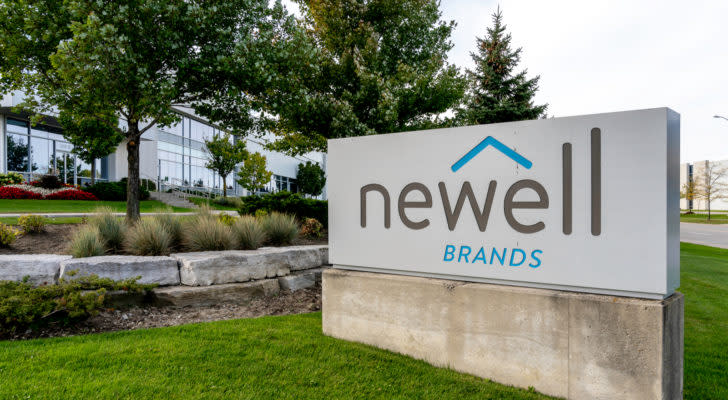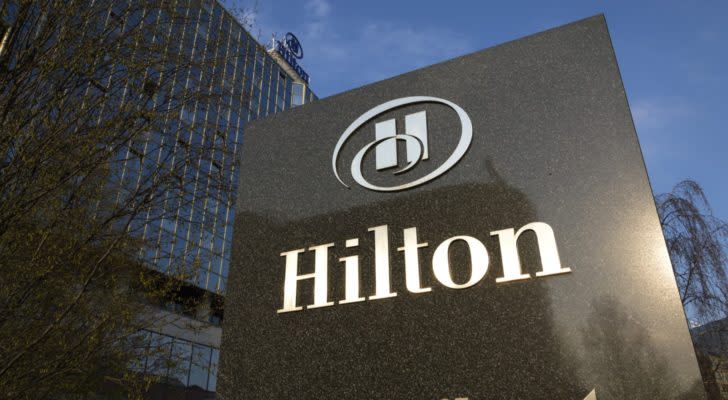7 F-Rated Dividend Stocks to Dump ASAP
As an income investor, it’s hard to forgive bad dividend stocks. While some can be bad for their fundamentals, the biggest sin of a dividend stock is when they reduce or even eliminate the payout.
Why should you be concerned about that? Companies don’t take the step of cutting a dividend lightly, because Wall Street’s reaction can be pretty severe. Companies that cut their dividend are usually in some financial distress or have made some pretty serious management miscalculations.
This is a bright red flag that raises concerns about the company’s profitability and long-term sustainability. The reduced dividend payout can lead to a loss of confidence among investors, further dampening the company’s prospects and making it difficult to attract new investors.
InvestorPlace - Stock Market News, Stock Advice & Trading Tips
Here I’m using a combination of the Portfolio Grader and the Dividend Grader to identify some troubled dividend stocks. If you have some of these in your portfolio, you probably aren’t getting the income that you deserve.
Paramount Global (PARA)

Source: Tada Images / Shutterstock.com
Paramount Global (NASDAQ:PARA) is the parent company of Paramount Studios, the streaming service Paramount Plus, and television networks including CBS, Comedy Central, Nickelodeon and MTV.
As a dividend stock, the company made a critical decision earlier this year to cut the payout from 24 cents per share to just 5 cents per share, saying it was a necessary move to achieve profitability with its new streaming service.
Did it work? Probably. Earnings in the third quarter showed revenue of $7.13 billion, up 3% from a year ago, and earnings of 36 cents per share, up from 21 cents per share a year ago.
The company’s subscription revenue grew 46% to $1.3 billion. Combined with growth in advertising revenue, Paramount says a 61% increase in revenue for its Paramount Plus streaming service.
“We successfully grew Direct-to-Consumer revenue and Paramount+ subscribers while narrowing DTC losses over 30%,” CEO Bob Bakish said. “In fact, we now expect DTC losses in 2023 will be lower than in 2022 – meaning streaming investment peaked ahead of plan. Looking ahead, we remain on the path to achieving significant company earnings growth in 2024.”
However, the potential in 2024 doesn’t make PARA a good dividend stock in 2023. While the stock price is jumping after Thursday’s Q3 earnings report, PARA stock is still down about 30% this year. And that weakened dividend just isn’t appealing.
For now, PARA stock has an “F” rating in both the Portfolio Grader and the Dividend Grader.
PacWest Bancorp (PACW)

Source: Pavel Kapysh / Shutterstock.com
PacWest Bancorp (NASDAQ:PACW) was wounded by the year’s regional bank crisis to where now it’s being acquired by another regional bank, Banc of California (NYSE:BANC).
The deal calls for investors to receive 0.6559 shares for each PACW share. As I described recently, the only way to make money on this deal is through a merger arbitrage play.
But because both stocks could have more drops in their share prices before the deal closes next year, you’d have to shore BANC stock to try to lock in a minimal gain.
That’s not worth the risk. Plus, the deal may not even go through.
PACW stock is down 66% this year and provides a tiny dividend yield of only 0.5%. It gets a “D” rating in the Portfolio Grader and an “F” rating in the Dividend Grader.
Newell Brands (NWL)

Source: JHVEPhoto/Shutterstock.com
Newell Brands (NASDAQ:NWL) is a consumer products company with brands such as Coleman grills, Rubbermaid containers and Sharpie markers.
But the company isn’t in great shape, despite those iconic brands. At the end of the first quarter of 2023, it had $271 million in cash with net debt of $5.4 billion. Those numbers improved by Q3 to $396 million in cash and debt of $4.7 billion, but those still aren’t good numbers.
Revenues in the third quarter were also down $2.04 billion, a 9% drop from a year ago. The company also reported a loss of 53 cents per share, a year after posting an EPS gain of 5 cents.
Newell’s dividend of 23 cents per share is also worse now, at 7 cents. Considering the company’s recent performance and enormous debt, I don’t see the higher dividend being restored soon.
NWL stock is down 48% this year, getting an “F” rating in both the Portfolio Grader and the Dividend Grader.
B&G Foods (BGS)

Source: Shutterstock
B&G Foods (NYSE:BGS) is a food company with over 50 brands of packaged foods, such as Cream of Wheat cereal, Green Giant vegetables, and Ortega Mexican food products.
But the business hasn’t been a good one for investors. The stock price is down 77% in the last two years and 22% in 2023. The company’s generous quarterly dividend, which used to be 47.5 cents per share, is now just 19 cents per share.
The company sold its Back to Nature brand to Barilla America to reduce its long-term debt, which stands at $2.31 billion. The divestiture is expected to be a headwind when the company announces Q3 earnings on November 8.
Earnings in the second quarter weren’t great, sales of $469.5 million were down 1.9% from a year ago. It issued guidance for the full year for sales between $2.11 billion and $2.13 billion.
Investors should be watching to see if those numbers change. BGS stock has a “D” rating in the Portfolio Grader and an “F” rating in the Dividend Grader.
V.F. Corp. (VFC)

Source: rblfmr / Shutterstock.com
V.F. Corp. (NYSE:VFC) is a U.S. clothing company that owns some top brands including The North Face, Timberland and Vans. But the company is coming off a bad earnings report, that triggered what it calls a “transformation program.”
And the icing on the cake? V.F. Corp. cut its dividend by 70%.
Revenue for the fiscal second quarter of 2024 (ending Sept. 30) was $3.03 million, down 2% from a year ago. The biggest dip was in the Americas, which saw an 11% drop. The company reported a loss of $1.16 per share, which was much worse than last year’s loss of 31 cents per share.
As a result, the company withdrew its full-year revenue and earnings guidance. It also lowered its free cash flow projection from $900 million to $600 million.
The company’s transformation program, called “Reinvent” calls for improving North America results, turning around its Vans brand, reducing costs and shoring up the balance sheet.
If you’re an income investor, all of this is bad news because you won’t see a decent dividend for a while. Meanwhile, the stock price is down 46% this year.
VFC stock has a “D” rating in the Portfolio Grader and an “F” rating in the Dividend Grader.
Hilton Worldwide Holdings (HLT)

Source: josefkubes / Shutterstock.com
Hilton Worldwide Holdings (NYSE:HLT) is a global hotel and hospitality company whose brands include Hilton, Canopy, Waldorf Astoria, Homewood Suites, Doubletree and Hampton.
It has 22 brands in all with nearly 7,300 properties. Hilton controls more than 1.1 million hotel rooms in 123 countries.
The hotel industry still has some headwinds from the Covid-19 pandemic. Although U.S. hotels saw a bounce back this year, international bookings have still been soft.
And Hilton saw some improvement there in the most recent quarter. Revenue per available room in the U.S. was up only 3% but increased by 39% in the Asia-Pacific, which has been the slowest to recover from the coronavirus pandemic.
HLT stock is up 20% this year, and more potential exists. However, the company’s dividend yield is only 0.4%, making this a pretty weak dividend stock. It gets a “C” rating in the Portfolio Grader and an “F” rating in the Dividend Grader.
Vornado Realty Trust (VNO)

Source: Maryna Pleshkun/Shutterstock.com
One result of the Covid-19 pandemic was a general acceptance of remote work. And while many workers are back in the office, at least part of the time remote work and hybrid work is here to stay.
That means less demand for office space, which affects real estate investment trusts like Vornado Realty Trust (NYSE:VNO), which focuses on office and retail properties in high-demand markets like New York and Washington, D.C.
Income for the third quarter was $52.8 million, a vast improvement from a year ago when income was only $7.7 million. But compare that to Q3 2019 income of $322.9 million, and you see how much Vornado’s business has changed since the pandemic.
VNO’s dividend was 66 cents per share before the pandemic. It was cut to 53 cents per share in 2020 and then cut again this year to 37.5 cents.
So even though you’re still getting a dividend yield of 10%, that’s largely because the stock price has fallen so much, down 67% since 2019.
VNO stock is up 5% this year, but it gets a “C” rating in the Portfolio Grader and an “F” rating in the Dividend Grader.
On the date of publication, neither Louis Navellier nor the InvestorPlace Research Staff member primarily responsible for this article held (either directly or indirectly) any positions in the securities mentioned in this article.
More From InvestorPlace
The #1 AI Investment Might Be This Company You’ve Never Heard Of
Musk’s “Project Omega” May Be Set to Mint New Millionaires. Here’s How to Get In.
The Rich Use This Income Secret (NOT Dividends) Far More Than Regular Investors
The post 7 F-Rated Dividend Stocks to Dump ASAP appeared first on InvestorPlace.
